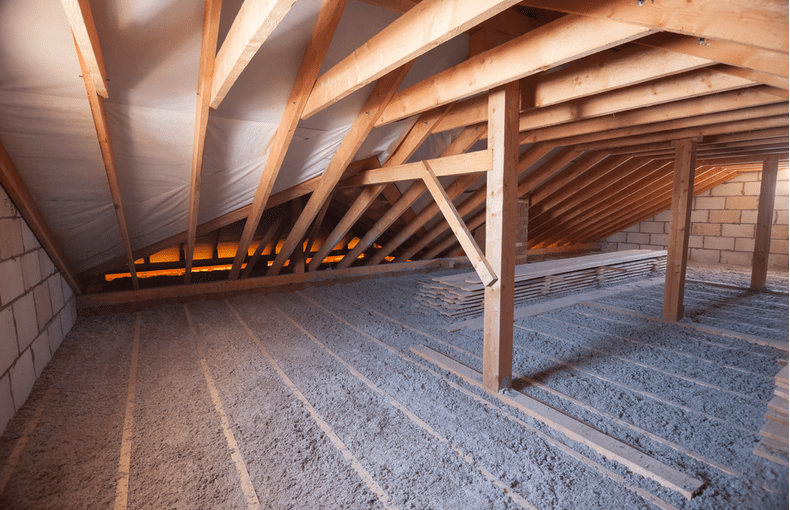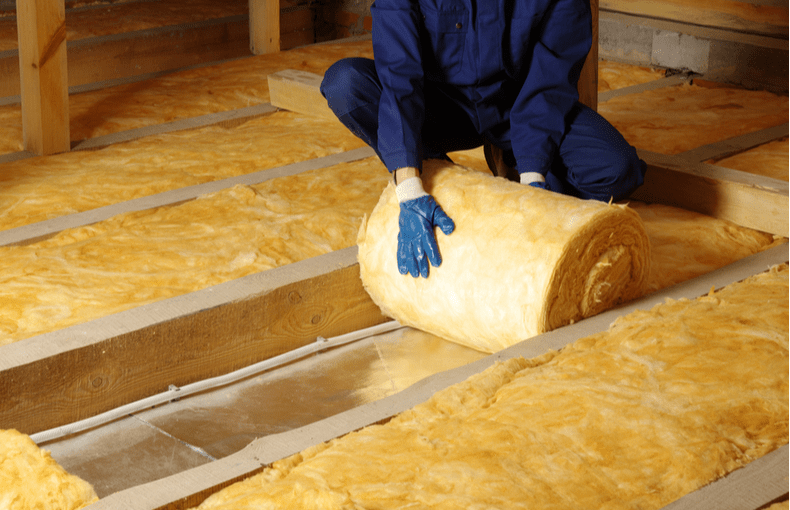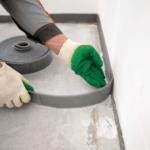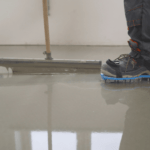The perfect insulation for your floor
A warm house in every season and with the lowest possible heating costs: with the right insulation, this doesn't have to remain a dream. In today's article, we look at insulating your floors and the different types of insulation and materials. Find out below which insulation materials are suitable for your floor and how you can increase thermal efficiency.
Types of insulation for better insulation
Have you ever wondered how most of the heat in your home is lost? After all, you could rectify the defects, increase the thermal efficiency of your home and save on heating costs. Of course, energy losses always depend on the property, but most heat is lost through the following components:
- approx. 30 % due to poorly insulated exterior walls
- approx. 20 % through the roof
- approx. 10 % through the floor
The exterior walls and the roof have a larger surface area than the floor of a house. Of course, all three can also be retrofitted with insulation, but the right approach is crucial. We deal specifically with floor insulation. Ideally, impact-resistant insulation should have been laid before the screed was installed. However, this is not the rule, especially in old buildings. In this case, the floor should be insulated retrospectively, paying attention to the different floor types.
Concrete floor insulation
PIR boards, polystyrene boards, rock wool boards or similar are mostly used to insulate concrete floors. Subsequent insulation of the floor is comparatively cumbersome, which is why the majority of builders resort to insulating the basement ceiling. However, there are also cases in which it is simply not possible to insulate the basement ceiling - for example, if the house does not have a basement. In this case, "insulation from above" is the only option. You should bear the following in mind:
- Insulating a concrete floor is often more expensive
- Space loses height
- Doors will be too long and need to be sanded down
- Windows will sit too low
These factors lead to more effort, but are nevertheless feasible and worthwhile in terms of future heating cost savings.
Insulation of the wooden floor
Wooden floors can be insulated either from below or from above. If the floor is made of wooden beams with sufficient empty space, it can be insulated directly. In this case, you can remove the floorboards and fill the gaps with rock wool or glass wool. Alternatively, individual openings can be created and filled with cellulose or polystyrene using blown-in insulation. The floor is then sealed again with the floorboards and a floor covering (laminate, vinyl, etc.) is laid.
Attic insulation
Around 20 % of heat escapes through an uninsulated roof. To save on heating costs, you should therefore definitely consider insulating the attic. You can either insulate the roof directly or the attic floor. As the latter is usually easier, most builders choose to insulate the floor. In general, most loft insulation is carried out with rock wool, cellulose or EPS granulate and covered with OSB boards (or similar).
Note: Rock wool offers better fire protection, but less protection against moisture, which you should take into account and compensate for during installation.
Insulation of a basement ceiling
If the ceiling on the first floor is too low - a typical problem in old buildings - the basement ceiling can also be insulated. In this case, there is no loss of height in the living areas. Nevertheless, you benefit from a warm floor on the first floor, as the cold is absorbed by the insulation of the basement ceiling. EPS or cellulose granulate or wood fibers are usually used for the insulation.

Properties of different insulation materials
Insulation materials generally fulfill several different functions. The most important of these are
- Thermal insulation
- Moisture protection
- Fire protection
You can choose between synthetic, organic and mineral insulation materials for floor insulation. All three types have their advantages and disadvantages, which we will outline below.
Overview: Different types of insulation materials
| Kind | Insulation material | Advantages | Disadvantages | Price range |
| Organic insulating materials | Hemp board | Good moisture protection Rotting resistance | Poor heat protection Relatively expensive | 30-55 €/m2 |
| Organic insulating materials | Cellulose | Good heat protection Good moisture protection | - | From 8 €/m2 |
| Mineral insulation materials | Glass wool & rock wool | Does not burn Mold resistance | Moderate heat protection | From 15 €/m2 |
| Mineral insulation materials | Perlite | Good heat protection Weather-resistant Moisture protection | Relatively expensive | From 40 €/m2 |
| Synthetic insulation materials | EPS | Good heat protection Good moisture protection | - | From 12 €/m2 |
| Synthetic insulation materials | PIR | Good heat protection Good moisture protection Weather-resistant | Relatively expensive | From 95 €/m2 |
Organic insulating materials
Those who attach particular importance to environmental compatibility usually opt for organic insulation materials. These are made from renewable raw materials and are usually supplemented with synthetic fibers. This increases fire protection in particular. Organic insulation materials can be used in almost all areas of the house, including floor insulation. However, they are generally more expensive and often not very durable.
Mineral insulation materials
A particularly high level of fire protection and protection against moisture is achieved by using mineral insulation materials. These consist of inorganic compounds and contain gravel, sand or lime, for example. You should pay attention to the weight of these models, which can be problematic when renovating old buildings for energy efficiency.
Synthetic insulation materials
Synthetic insulation materials are a particularly inexpensive, efficient and durable alternative. These are particularly popular with building owners due to the properties mentioned above. They consist mainly of various plastics and are therefore not particularly environmentally friendly.
Conclusion: Insulating the floor increases the quality of living
Floor insulation makes sense in any case, as a large proportion of the thermal energy can escape via the floor. When choosing the right insulation material, you should pay particular attention to good moisture, fire and heat protection. You should also consider insulating the basement ceiling on the first floor, as this measure is usually less complicated and less expensive.







